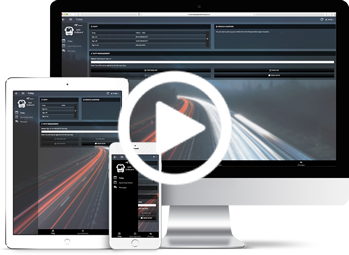Driver sign-on: why it’s time to go mobile
Efficient driver sign-on processes are central to any bus operation, underpinning every shift and shaping the business’ bottom line by streamlining operations.
Technology has played a significant role here, which is perhaps why so many operators have followed the same broad evolution: beginning with paper registers at the main depot; then introducing punch clock machines, followed by electronic registration stations removing the need for dedicated sign-on staff. Today, most large operators use computerised Allocation systems, often integrated with broader driver management systems.
Digitalisation has delivered numerous benefits: Shift records integrated with HR and payroll ensure efficient and accurate payment with clear audit trails for any disputes. Advances in connectivity have also allowed sign-on stations to be distributed throughout a service area, removing the need for drivers to visit a single centralised point either side of their shift.
Yet despite this impressive evolution, even dedicated sign-on kiosks – or mobile inspectors positioned at key spots – tie drivers to specific locations, adding travel time and expense, both of which are detrimental to drivers and operators. Is there a better way?
The mobile solution
I believe it is time for bus operators to embrace the next stage in this evolution with online driver portals that offer a single communications platform between drivers and the business. This approach makes it possible for drivers to sign on (and off) shifts from almost any location, and in real-time.
Clearly there are huge benefits to be derived from allowing drivers to start and end shifts at the most efficient locations regardless of depot locations. However, there are several more nuanced factors too. Let’s take a look at them.
1. Meeting drivers’ flexibility needs
At Trapeze we recently worked with a group of customers to identify and define the ‘driver personas’ that make up a typical bus operator’s workforce. We found that the most common driver type was a so-called ‘family man’ (or woman), characterised by the need to balance their work life alongside strong external commitments – typically, though not always, family life. In short, most driver workforces are dominated by individuals for whom flexibility, and being able to fit work around home life, is critical.
It is therefore easy to see that being able to offer drivers innovative (and flexible) ways to communicate with the business is likely to make a particular bus operator vastly more appealing as an employer, assisting recruitment and ensuring higher driver morale. While there are various ways in which driver self-service helps drivers to enjoy greater flexibility in their work, mobility of sign-on is a potential ‘game changer’ here, simply by removing the need for drivers to visit centralised depots before and after each shift.
2. Happy, engaged drivers
The risks of bus driver attrition are well understood: we have previously referenced reports indicating that almost half of new bus drivers leave in their first 12 weeks on the job. This obviously incurs huge costs in terms of wasted training and subsequent recruitment – but it also represents an opportunity, since an operator that manages to reduce attrition rates will retain a significant competitive advantage over rival companies. Could responding to drivers’ demands for flexibility have a direct impact on the business’ bottom line?
I believe that moving dutysign-on away from depots and into drivers’ hands has the potential to ease risk of attrition, both by delivering the flexibility outlined above; but also by contributing to a broader culture of putting the driver first. A portal solution enables information to be pushed directly to drivers wherever they are, removing the burden of having to call or visit the depot for information – or even to wait until they get home to access via a PC.
Furthermore, by including mobile sign-on as part of a dedicated driver interaction portal – comprising self-service, shift swaps, virtual driver training and more – we can provide drivers with easy access to all of the tools and data they may need; reducing frustration and wasted time; and actually making them feel truly valued by their employer.
3. Roadside sign-on and rapid relief
Finally, mobile sign-on processes offer significant benefits mid-shift by enabling flexibility of sign-on and relief processes when, for example, incidents occur. Traffic offices can request real-time status updates from drivers en route to relief points, making it easy to clearly see which reliefs may encounter problems.
This offers a precious window in which spare drivers can be deployed or alternative routes selected. Crucially, even if the problem cannot be averted, the office at least has time in which to implement contingency processes such as building curtailments into information channels.
Conclusion
There are many compelling reasons why bus operators should embrace the next stage of evolution in driver sign-on. Time and cost savings at the beginning and end of shifts will deliver immediate benefits, while the ability to redesign schedules without consideration for centralised depots is likely to produce significant efficiency improvements.
But in the longer term I believe that improving interactions with our drivers will result in happier, more motivated and more committed staff – which benefits operators, the public and drivers themselves.
The days of punch clocks and paper registers are long gone – it’s now time for the driver portal era.

Here to help
Contact us and speak with one of our specialists:
+44 (0) 808 281 1039
More Info
About Us | Careers | Contact Us | Legal | Privacy
(c) 1999 – 2020 Trapeze Software ULC. All rights reserved
Trapeze Group respects your privacy

